Zonal defending is one of the most important and widely-used defensive systems in modern football. This approach focuses on defending space rather than marking individual opponents. By prioritizing the protection of key areas on the pitch, teams can maintain their shape, limit attacking threats, and force opponents into less dangerous situations.
In this article, we’ll break down what zonal defending is, how it works in different phases of the game, its advantages, challenges, and why it has become such a vital part of football tactics at all levels.
What is Zonal Defending?
Zonal defending is a defensive strategy where players are assigned specific areas or zones of the pitch to cover. The primary focus is on maintaining the team’s shape and defensive structure rather than tracking individual players throughout the game.
The basic principle is that when the ball enters a player’s zone, they take responsibility for defending that space and any attacking players within it. Once the ball moves out of their area, another player takes over, ensuring that the team operates as a cohesive unit.
For example, if an opposition winger moves into the fullback’s zone, it is the fullback’s responsibility to engage them. However, if the winger drifts inside toward the central defenders, the fullback will pass the responsibility to a teammate and return to covering their own zone.
This flexibility and organization allow zonal defending to be a highly effective way of managing space and controlling attacking threats, especially against teams that mostly rely on fluid movements.
Key Principles
Zonal defending relies on several fundamental principles that allow teams to maintain their defensive solidity.
1. Compactness
One of the main goals of zonal defending is to stay compact as a team. This means reducing the spaces between the defensive, midfield, and forward lines, making it harder for the opposition to exploit gaps. Compactness ensures that teams defend as a unit and that any attacking threats are dealt with collectively rather than individually.
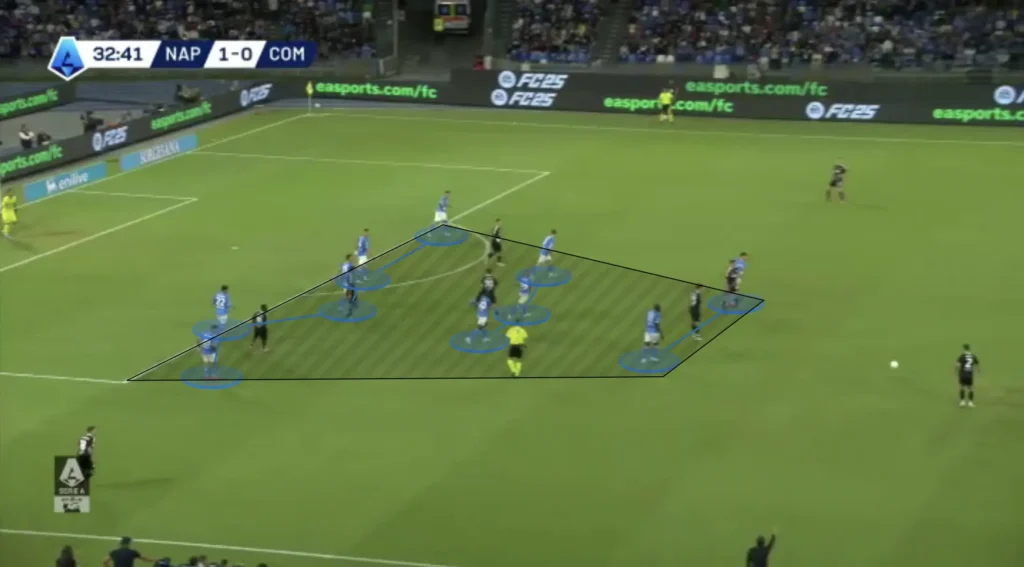
2. Shifting as a Unit
In a zonal system, players move laterally and vertically as a unit based on the ball’s position. For instance, when the ball is on the right side of the pitch, the entire team shifts toward that side to compress the space around the ball. This makes it difficult for the attacking team to penetrate and forces them to play backward or switch the ball to the other flank, buying time for the defense to reorganize.
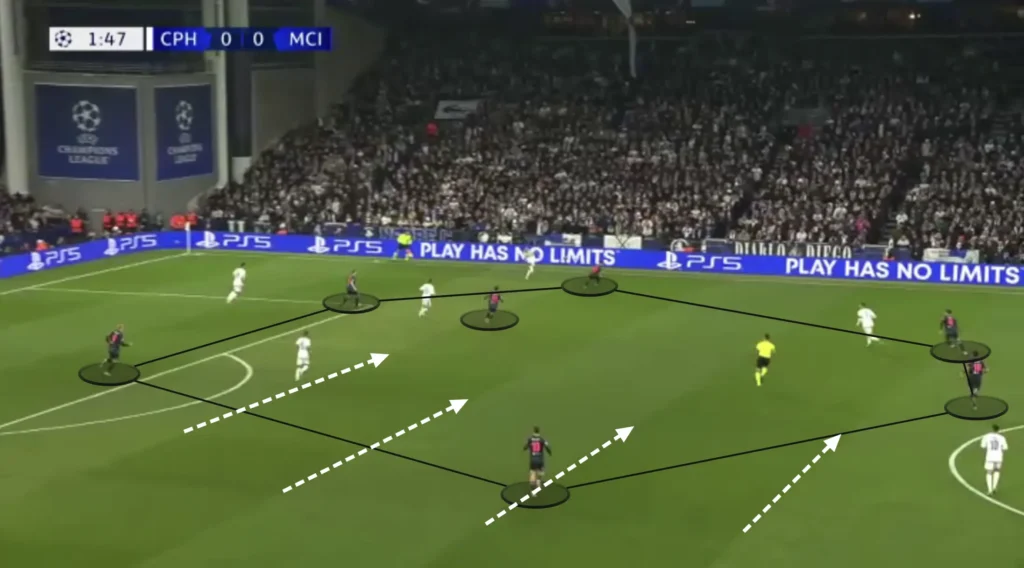
3. Covering Key Spaces
A zonal defense prioritizes protecting high-risk areas, such as the central zones in front of the goal. The idea is to force the opposition to play in wider or less dangerous areas, reducing the likelihood of conceding clear-cut chances.
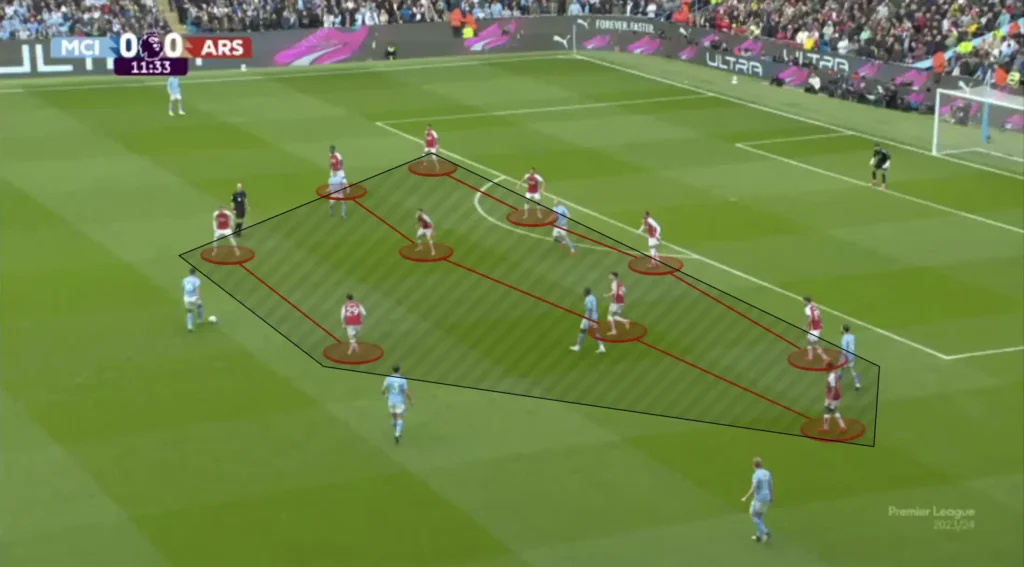
4. Communication and Awareness
Communication is critical in zonal defending. Players must constantly communicate with their teammates to ensure that zones are covered, threats are identified, and responsibilities are handed over seamlessly as opponents move between zones.
5. Anticipation and Reading the Game
To succeed in a zonal system, players must have excellent awareness and anticipation. They need to read the game, predict where the ball will go, and position themselves accordingly to intercept passes or block shooting lanes.
Zonal Defending in Different Phases of Play
1. Open Play
In open play, zonal defending revolves around staying compact, shifting as a unit, and closing down spaces near the ball. The focus is on controlling central areas and forcing the opposition into wide positions, where they are less likely to create dangerous chances.
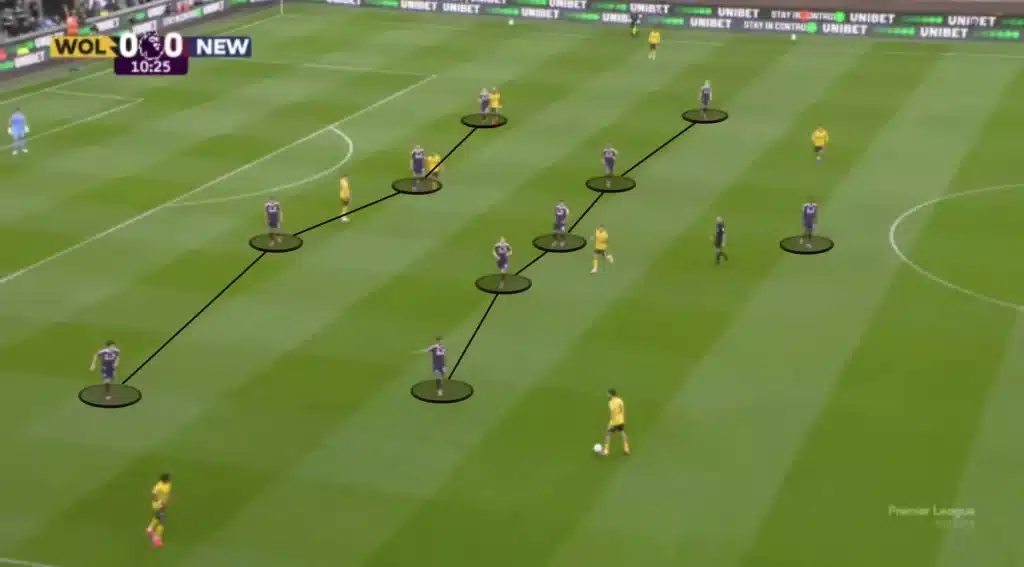
2. Set-Pieces
During corners or free kicks, many teams adopt a combination of zonal and man-to-man marking. Defenders cover specific zones near the goal, while other players track key attackers. This hybrid approach aims to balance spatial awareness with the need to nullify individual threats.
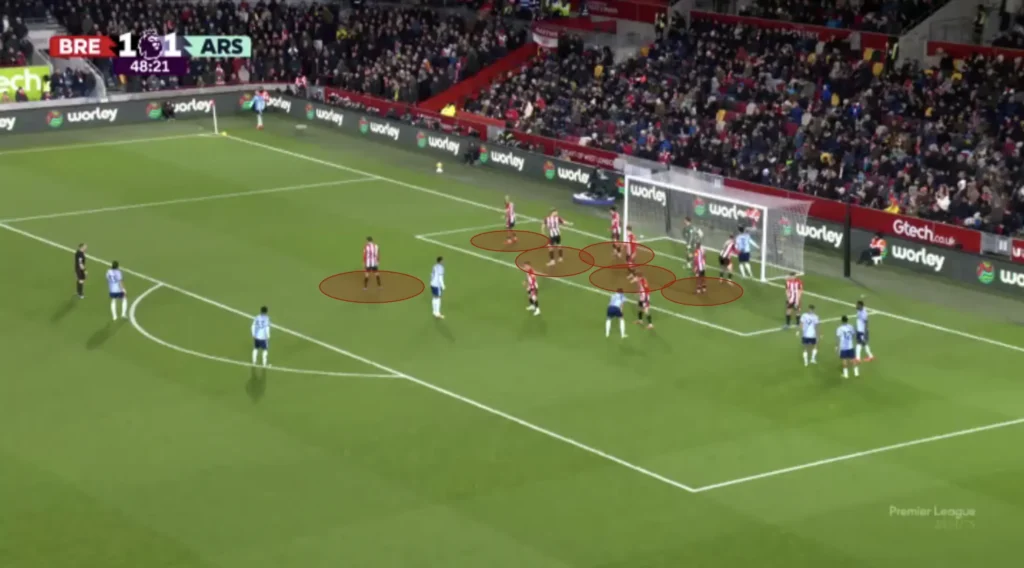
3. Defensive Transitions
Zonal defending also plays a crucial role during transitions. When a team loses possession, they must quickly reorganize into their defensive shape, ensuring that key spaces are covered and that the opposition cannot exploit gaps left during the attacking phase.
Examples of Zonal Defending in Football
Some of the best coaches in the world use zonal defending. For example:
Unai Emery’s Aston Villa: Emery’s Aston Villa is a great example of a well-drilled zonal defending system. Under Emery, Villa usually defends in a mid-block or low-block structure, staying compact and protecting central areas. Their ability to shift as a unit and block passing lanes frustrates opponents, forcing them into wide areas or low-percentage shots.
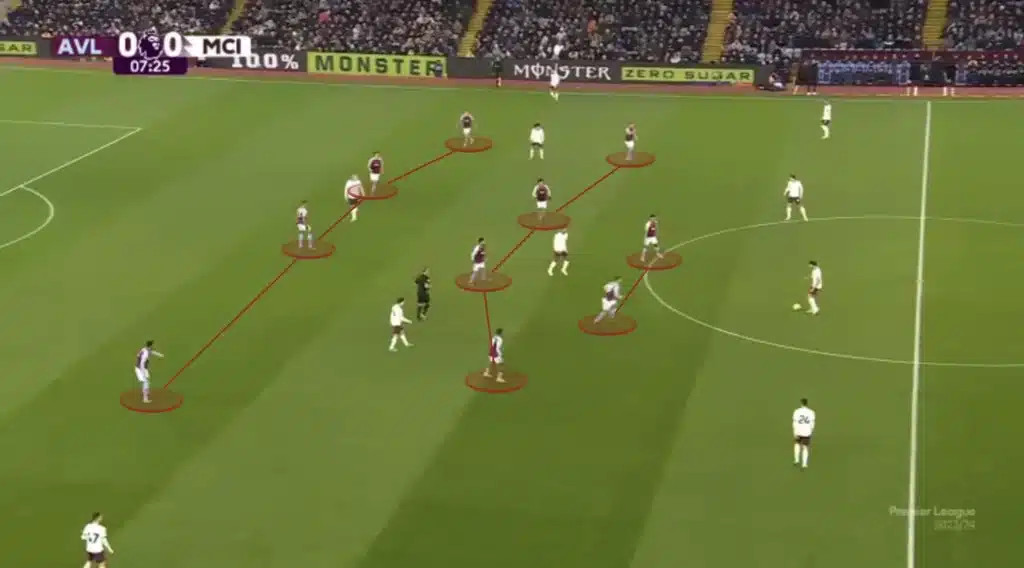
Diego Simeone’s Atlético Madrid: Simeone’s Atlético Madrid is perhaps the quintessential example of zonal defending, particularly in a low-block system. Atlético’s defensive shape is highly disciplined, with players maintaining their zones and defending as a cohesive unit. Simeone’s team excels at forcing opponents into wide areas, making it incredibly difficult to break them down centrally.
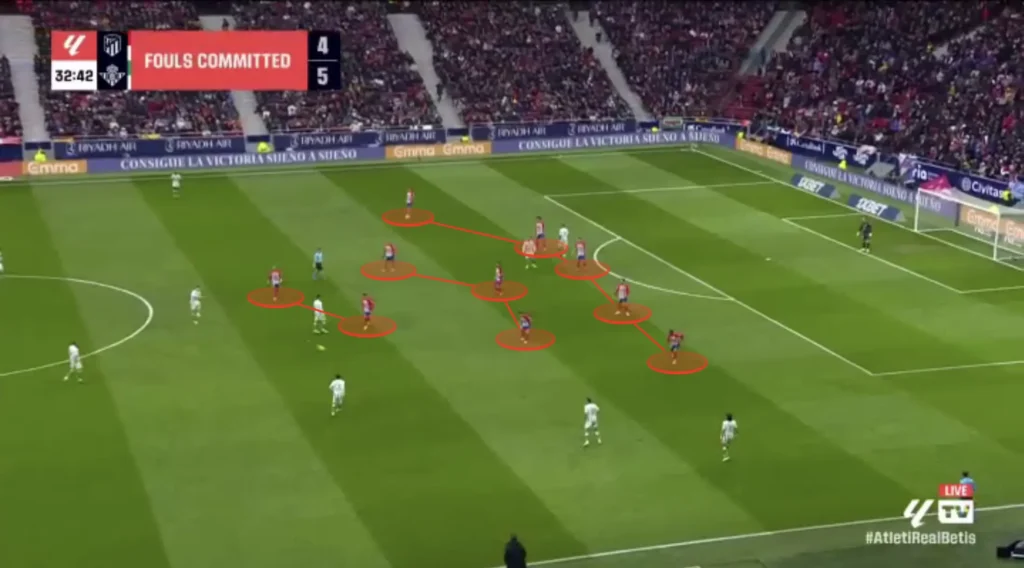
Ralf Rangnick’s Austria: As Austria’s head coach, Rangnick has implemented a zonal defending system that emphasizes high-energy pressing and compact defensive organization. Austria’s players cover specific zones while aggressively pressing the ball carrier. This blend of zonal defending and pressing allows Austria to disrupt opposition attacks and recover possession quickly.
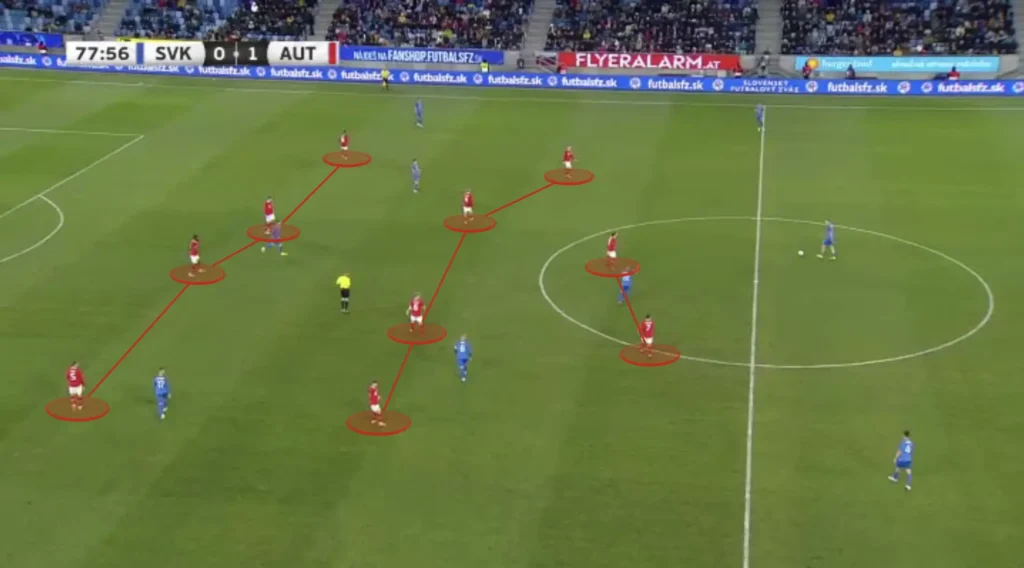
Advantages of Zonal Defending
Zonal defending offers several benefits that make it a preferred strategy for many teams:
- Maintains Team Structure: Zonal defending ensures that the team stays organized and compact, reducing the likelihood of being stretched or caught out of position.
- Flexibility: Unlike man-to-man marking, where players can be dragged out of position by their opponents, zonal defending allows players to focus on defending their assigned space, making it harder for attackers to create openings.
- Energy Efficiency: By defending space instead of chasing individual players, teams can conserve energy over the course of a match, which is particularly important in high-intensity games.
- Adaptability: Zonal defending can be adjusted to suit different formations, match situations, and opponent strategies, making it a versatile defensive approach.
Challenges of Zonal Defending
While zonal defending is effective, it is not without its challenges:
- Coordination is Key: If players fail to communicate or react quickly enough, gaps can appear in the defensive structure, allowing attackers to exploit them.
- Susceptibility to Numerical Inferiorities: Teams that move the ball quickly or use clever off-the-ball runs can disrupt a zonal system, creating numerical advantages in specific zones and opportunities to break through the defense.
- Set-Piece Vulnerability: Zonal defending can be problematic during set-pieces like corners and free kicks. Attackers who time their runs well can gain a significant advantage against static defenders covering zones.
Conclusion
Zonal defending is a cornerstone of modern football tactics. It emphasizes teamwork, structure, and the ability to control space, making it an essential strategy for teams at all levels. While it requires excellent communication, awareness, and anticipation, the benefits of zonal defending – including improved organization, energy efficiency, and adaptability – make it one of the most effective defensive systems in the game.
By understanding the principles of zonal defending, players and fans can gain a deeper appreciation of the tactical battles that unfold on the pitch. Whether watching your favorite team defend a narrow lead or analyzing a game-winning block, zonal defending is often at the heart of defensive success.
Next time you’re watching a match, keep an eye out for the subtle but crucial movements of a zonal defensive line – it might just change the way you see the game!
